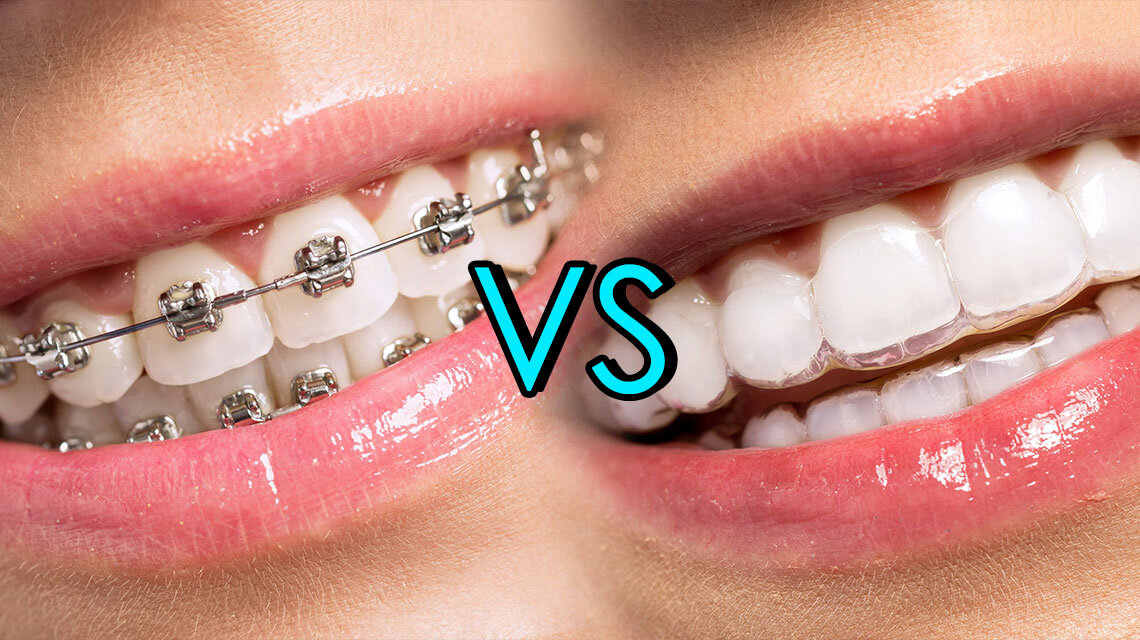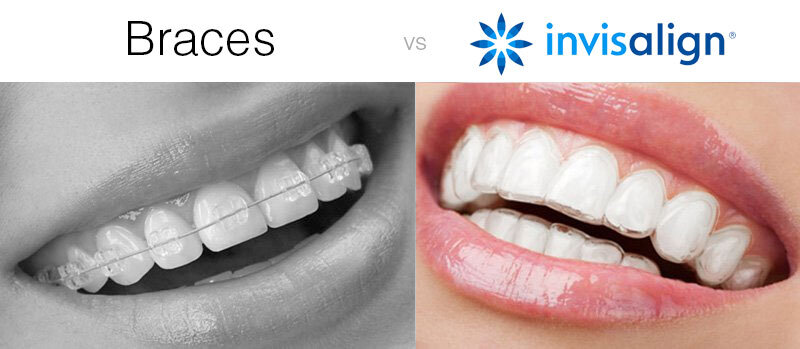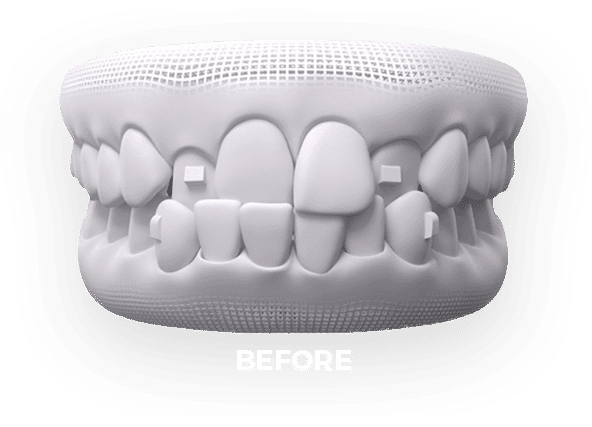The Ultimate Contrast: Invisalign vs. Traditional Dental braces for Adults
The Ultimate Contrast: Invisalign vs. Traditional Dental braces for Adults
Blog Article
Invisalign vs. Typical Dental braces: Which Choice Is Right for You?
When thinking about orthodontic treatment, the selection in between Invisalign and standard braces provides numerous essential aspects that warrant cautious evaluation. Invisalign uses a discreet alternative with detachable aligners, while standard dental braces supply a more visible yet efficient service for serious imbalance. Each alternative encompasses distinct benefits and drawbacks connected to aesthetic appeals, comfort, therapy duration, and price. Recognizing these nuances is vital for making an educated choice that aligns with your personal choices and way of living. The question stays: which alternative will ideal satisfy your orthodontic demands and expectations?
Review of Therapy Alternatives

On the other hand, conventional dental braces include steel braces and cables that are bound to the teeth. This technique applies continual stress gradually to accomplish placement. While effective for intricate orthodontic problems, traditional dental braces need normal visits for adjustments and can posture obstacles in preserving oral health because of the difficulty of cleaning up around cables and brackets.
Both alternatives have their qualities, and the selection usually pivots on specific oral conditions, way of living preferences, and patient compliance. Ultimately, consulting an orthodontic specialist is essential for establishing the most ideal therapy plan tailored to specific requirements. Understanding the nuances of each choice can considerably affect the total success of orthodontic treatment.
Aesthetic Factors To Consider
A significant aspect influencing the option in between Invisalign and conventional dental braces is the aesthetic allure each treatment provides. Invisalign aligners are crafted from clear plastic, making them practically unseen when put on.
In contrast, conventional braces contain metal brackets and wires, which can be extra obvious. While developments in orthodontic modern technology have actually brought about the growth of smaller brackets and tinted elastics, standard braces still preserve an even more noticeable account. For some individuals, the presence of dental braces may prevent them from seeking necessary treatment.
Inevitably, the selection between Invisalign and conventional braces might depend upon personal preferences concerning looks. People that prioritize discretion often favor Invisalign, while those that are less worried regarding presence might select conventional dental braces. Comprehending the aesthetic effects of each choice is important for making an informed choice that lines up with one's lifestyle and preferences.
Convenience and Convenience

In regards to benefit, Invisalign aligners are removable, enabling clients to appreciate their favored foods without constraint and keep ideal oral health. Cleaning and flossing are simplified, as the aligners can be obtained throughout these routines, whereas standard braces require mindful maneuvering around brackets and cables.
Furthermore, Invisalign's dynamic system enables fewer orthodontic brows through. Clients generally obtain numerous collections of aligners at the same time, which can streamline the treatment procedure and reduce time spent in the orthodontist's chair. In comparison, conventional dental braces necessitate regular changes, making them much less practical for those with busy schedules. Invisalign. Overall, the convenience and benefit of Invisalign make it an appealing selection for many people looking for orthodontic treatment.
Therapy Period and Effectiveness
While both Invisalign and typical braces work in remedying dental misalignments, the period of treatment can differ significantly between both choices. Generally, Invisalign therapy can take anywhere from 12 to 18 months, relying on the intricacy of the case. The click for more info clear aligners work by gradually changing teeth into their preferred settings, and regular follow-ups with an orthodontist aid guarantee progress remains on the right track.
In contrast, conventional dental braces frequently need a longer commitment, generally varying from 18 months to three years. This is due to their set nature and making use of braces and cords, which can be a lot more reliable for extreme misalignments and complicated instances (Invisalign). The therapy performance of typical braces is well-documented, as they permit for accurate adjustments and better control over tooth movement
Eventually, the option in between Invisalign and conventional dental braces might depend upon both the anticipated therapy period and the certain dental issues at hand. Consulting with an orthodontist is crucial, as they can provide customized referrals based on specific demands, making sure the selected method lines up with desired results and timeframes.
Cost Comparison and Insurance Policy Options
Cost plays a considerable role in the decision-making procedure for people considering orthodontic treatment, whether selecting Invisalign or typical dental braces. Usually, the price of Invisalign varieties from $3,000 to $8,000, while traditional braces normally cost in between $2,000 and $6,000. Factors affecting these costs consist of the intricacy of the situation, the duration of therapy, and geographical location.
Lots of dental insurance policy plans offer partial coverage for orthodontic therapies, however the specifics can vary extensively. Typically, standard braces might be more regularly covered by insurance policy strategies contrasted to Invisalign, which some insurance companies classify as a cosmetic treatment.
Furthermore, several orthodontic methods provide flexible settlement plans, making both treatment alternatives much more easily accessible. Clients must ask about possible financing alternatives and discount rates for in advance repayments. Evaluating the total cost, consisting of insurance advantages and repayment strategies, is crucial for making an educated decision that aligns with both aesthetic preferences and spending plan considerations.

Conclusion
In recap, the selection in between Invisalign and standard dental braces depends upon multiple aspects, including aesthetic choices, comfort, therapy their website period, and cost. Invisalign provides a look at this site very discreet, detachable option that helps with dental hygiene and dietary flexibility, while typical braces may be better for intricate oral concerns and frequently come at a reduced rate factor. Inevitably, consultation with an orthodontist is vital to analyze specific circumstances and determine one of the most proper therapy alternative for attaining ideal dental alignment.
When thinking about orthodontic treatment, the selection in between Invisalign and typical dental braces provides several important factors that merit careful analysis.Comparing Invisalign and traditional dental braces exposes unique treatment alternatives for orthodontic correction.While both Invisalign and standard braces are effective in dealing with dental imbalances, the period of treatment can vary significantly in between the two alternatives.Expense plays a significant role in the decision-making procedure for individuals considering orthodontic therapy, whether opting for Invisalign or typical braces.In summary, the selection between Invisalign and typical braces hinges on numerous elements, consisting of aesthetic choices, comfort, therapy period, and price.
Report this page